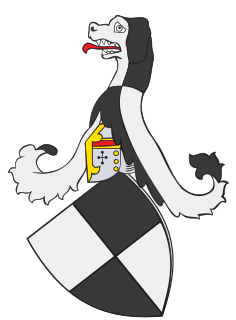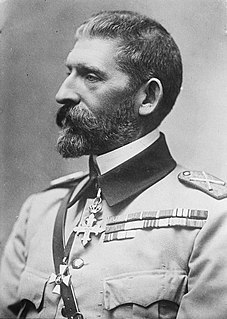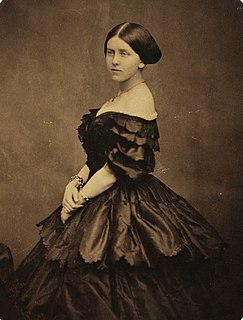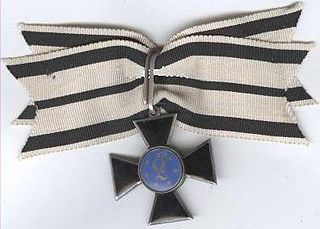Related Research Articles

The House of Hohenzollern is a German royal dynasty whose members were variously princes, electors, kings and emperors of Hohenzollern, Brandenburg, Prussia, the German Empire, and Romania. The family arose in the area around the town of Hechingen in Swabia during the 11th century and took their name from Hohenzollern Castle. The first ancestors of the Hohenzollerns were mentioned in 1061.

Hohenzollern-Sigmaringen was a principality in southwestern Germany. Its rulers belonged to the senior Swabian branch of the House of Hohenzollern. The Swabian Hohenzollerns were elevated to princes in 1623. The small sovereign state with the capital city of Sigmaringen was annexed to the Kingdom of Prussia in 1850 following the abdication of its sovereign in the wake of the revolutions of 1848, then became part of the newly created Province of Hohenzollern.

Ferdinand I, nicknamed Întregitorul, was King of Romania from 1914 until 1927. Although a member of the Swabian branch of Germany's ruling House of Hohenzollern, Ferdinand sided against the Central Powers in World War I. Thus, at the war’s end, Romania emerged as a much-enlarged kingdom, including Bessarabia, Bukovina and Transylvania, and Ferdinand was crowned king of "Greater Romania" in a grand ceremony in 1922. He died from cancer in 1927, succeeded by his grandson Michael under a regency.

Carol I, born Prince Karl of Hohenzollern-Sigmaringen, was the monarch of Romania from 1866 to 1914. He was elected Ruling Prince (Domnitor) of the Romanian United Principalities on 20 April 1866 after the overthrow of Alexandru Ioan Cuza by a palace coup d'état. In May 1877, he proclaimed Romania an independent and sovereign nation. The defeat of the Ottoman Empire (1878) in the Russo-Turkish War secured Romanian independence, and he was proclaimed King of Romania on 26 March [O.S. 14 March] 1881. He was the first ruler of the Hohenzollern-Sigmaringen dynasty, which ruled the country until the proclamation of a republic in 1947.

Sigmaringen is a town in southern Germany, in the state of Baden-Württemberg. Situated on the upper Danube, it is the capital of the Sigmaringen district.

Leopold, Prince of Hohenzollern was the head of the Swabian branch of the House of Hohenzollern, and played a fleeting role in European power politics, in connection with the Franco-Prussian War.

Prince Karl Anton of Hohenzollern-Sigmaringen was head of the Princely House of Hohenzollern-Sigmaringen, Hohenzollern from 1869 and Prime Minister of Prussia. He was the son of Karl, Prince of Hohenzollern-Sigmaringen, who abdicated in favour of his son on 27 August 1848, and his first wife Marie Antoinette Murat, niece of Joachim Murat.

The succession order to the throne of the Romanian monarchy, abolished since 1947, was regulated by the monarchical constitution of 1938, suspended by the Royal Law Decree no. 3052 of September 1940 and the 1884 Law of the Romanian Royal House Rules enacted pursuant to the 1866 Constitution of Romania which had confirmed the enthronement of Prince Karl (Carol) of Hohenzollern-Sigmaringen. The 1938 Constitution stipulated Salic law, according to which the throne was hereditary in King Carol I's legitimate descent and, if his male issue failed, in the descent of his brothers of the Sigmaringen princely branch of the House of Hohenzollern, according to agnatic primogeniture and to the perpetual exclusion of females and their descendants. The last monarch to reign in Romania was King Michael I, who was born in 1921, abdicated his throne on 30 December 1947 under coercion, and went into exile in Switzerland. He died on 5 December 2017 in Aubonne, Switzerland.

Karl Friedrich, Prince of Hohenzollern is the eldest son of the late Friedrich Wilhelm, Prince of Hohenzollern and Princess Margarita of Leiningen. He became head of the Princely House of Hohenzollern, the Roman Catholic Swabian branch of the dynasty, upon his father's death on 16 September 2010.

Stephanie of Hohenzollern-Sigmaringen was the Queen consort of King Peter V of Portugal.

William, Prince of Hohenzollern was the eldest son of Leopold, Prince of Hohenzollern and Infanta Antónia of Portugal.

Sigmaringen Castle was the princely castle and seat of government for the Princes of Hohenzollern-Sigmaringen. Situated in the Swabian Alb region of Baden-Württemberg, Germany, this castle dominates the skyline of the town of Sigmaringen. The castle was rebuilt following a fire in 1893, and only the towers of the earlier medieval fortress remain. Schloss Sigmaringen was a family estate of the Swabian Hohenzollern family, a cadet branch of the Hohenzollern family, from which the German Emperors and kings of Prussia came. During the closing months of World War II, Schloss Sigmaringen was briefly the seat of the Vichy French Government after France was liberated by the Allies. The castle and museums may be visited throughout the year, but only on guided tours. It is still owned by the Hohenzollern-Sigmaringen family, although they no longer reside there.

Princess Josephine Friederike Luise of Baden was born at Mannheim, the second daughter of Charles, Grand Duke of Baden and his wife, Stéphanie de Beauharnais. Through her eldest son, Leopold, she is the ancestress of the Romanian royal family and the Yugoslav Royal family. Through her younger daughter Marie, she is also the ancestress of the Belgian royal family and the Grand Ducal family of Luxembourg.

Princess Joséphine Caroline of Belgium was the youngest daughter of Prince Philippe, Count of Flanders and Princess Marie of Hohenzollern-Sigmaringen. She was an older sister of Albert I of Belgium.

Frederick, Prince of Hohenzollern was the eldest son of William, Prince of Hohenzollern and Princess Maria Teresa of Bourbon-Two Sicilies. He had a twin brother, Franz Joseph, Prince of Hohenzollern-Emden, who was born a few minutes after he was.

Princess Marie of Hohenzollern-Sigmaringen, later Princess Marie of Belgium, Countess of Flanders was a Princess of Hohenzollern-Sigmaringen, later simply of Hohenzollern, and mother of King Albert I of Belgium.

Amalie Zephyrine of Salm-Kyrburg was a daughter of Prince Philip Joseph of Salm-Kyrburg and Princess Maria Thérèse de Hornes, eldest daughter and heiress of Maximilian, Prince of Hornes. She married into the House of Hohenzollern-Sigmaringen, and is considered the "savior" of Hohenzollerns.

The Order of Louise was founded on 3 August 1814 by Frederick William III of Prussia to honor his late wife, the much beloved Queen Louise. This order was chivalric in nature, but was intended strictly for women whose service to Prussia was worthy of such high national recognition. Its dame companion members were limited to 100 in number, and were intended to be drawn from all classes.

Prince Karl Anton of Hohenzollern-Sigmaringen was a member of the Princely House of Hohenzollern-Sigmaringen. Karl Anton was the third and youngest son of Leopold, Prince of Hohenzollern and his wife Infanta Antónia of Portugal. Karl Anton's elder brothers were William, Prince of Hohenzollern and Ferdinand I of Romania.
Princess Amalie Antoinette Karoline Adrienne of Hohenzollern-Sigmaringen was a member of the House of Hohenzollern-Sigmaringen and a Princess of Hohenzollern-Sigmaringen by birth. Through her marriage to Prince Eduard of Saxe-Altenburg, Amalie was also a member of the House of Saxe-Altenburg and Princess of Saxe-Altenburg. Amalie was a grand-niece of Joachim Murat, King of the Two Sicilies from 1808 to 1815 and a brother-in-law of Napoleon Bonaparte, through marriage to Napoleon's youngest sister, Caroline Bonaparte.